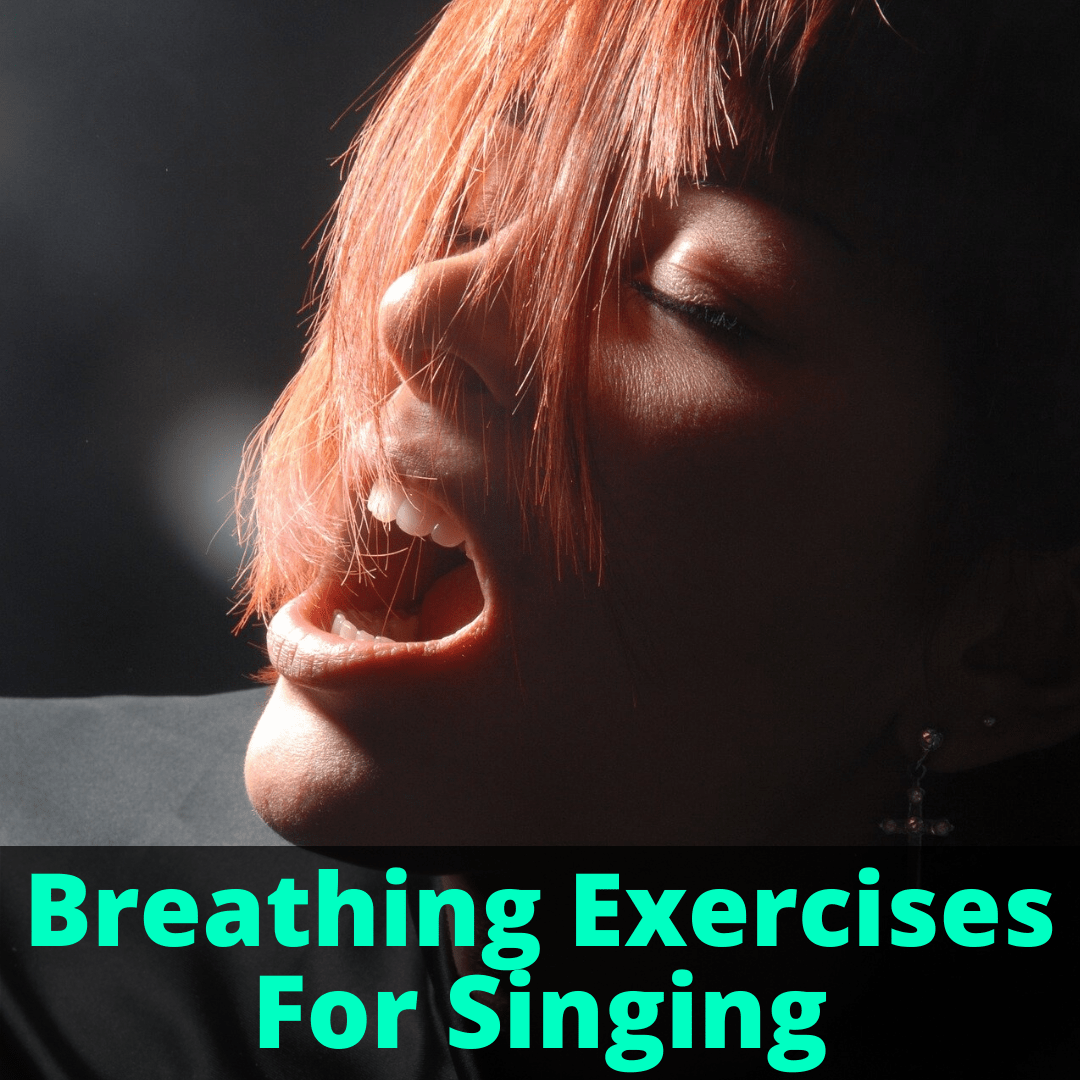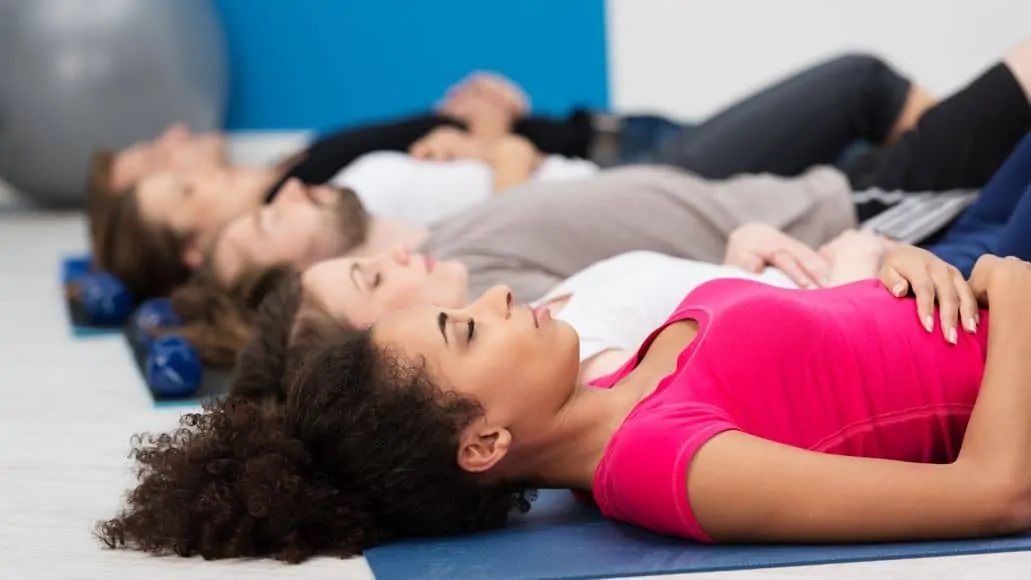 If you can’t breathe, you can’t sing.
If you can’t breathe, you can’t sing.
That is why all good vocal programs begin with breathing exercises for singing.
Before you can hope to sing well, you need to learn to breathe correctly.
Simply knowing the right way to breathe, and learning to breathe that way instinctively, will drastically improve your singing voice in as little as a week.
But what exercises do you do? There are so many out there.
Which ones are good and which are just a waste of time?
There are actually a bunch of useful exercises, but we’ve narrowed it down to six simple ones that will get you all the practice you need.
Table of Contents
Breathing Exercises For Vocalists
As a singer, the most important tool you have in your arsenal is your diaphragm. Just like athletes exercise the muscles that make them elite physical specimens, so must you exercise your diaphragm to reach your full potential.
Posture is also vital for correct breathing. The following breathing exercise for singers focus on diaphragmatic breath control and posture. Together, they will help you improve your breathing for singing.
Exercise 1: Hiss
This first exercise helps you strengthen your diaphragm, which in turn helps you improve how you control your breathing while you sing. Effectively, it’ll help you hold notes for longer, and with more ease.
Because the Hiss is done by inhaling and exhaling for different amounts of time, it’s best to use a metronome. This will help you keep count of how long you’re inhaling and exhaling. If you don’t have a physical one, there are plenty of free online metronomes, like this one.
To get the most out of this exercise, breathe with your diaphragm (our article on learning to sing teaches you how), and not with your neck and shoulders. And, when you exhale, hiss.
- Give yourself range in the number of counts you inhale and exhale for.
- Start with inhaling for four counts, and the exhale for four counts.
- Then, inhale for four, exhale for eight.
- Inhale for four, exhale for twelve.
- In for four, out for sixteen.
- Then repeat these reps, except inhale for two counts.
- And then repeat the reps again, but now only inhale for one count.
Exercise 2: Lie Down
Lying down offers a few great advantages to your breathing as a singer. When you’re lying down on the floor, face up, your posture is as close to perfect as it will ever be.
And good posture is a major key to singing well – it ensure your breathing is fluid and supported properly by the muscles you should be using, and not your throat, neck, shoulders, tongue and jaw.
Another reason breathing while lying down is advantageous is that it’s not as easy to breathe solely into your chest when you’re lying down. This means that you’ll breathe deeper, using your diaphragm.
As a result, you’ll have more freedom with your breathing. Proper diaphragmatic breathing not only helps you sound better, but it also helps with issues like getting a sore throat when singing.
To practice this exercise, you’re going to need a book.
- When you’re on your back, put the book in the middle of your belly. Now relax all the muscles in your body entirely. Once you’re completely calm, you’ll notice the book rising and falling gently.
- Breathe in so that the book rises. Then, just like the first exercise, hiss as you exhale so that you control how slowly the book falls. Don’t put yourself or your abdominal muscles under any stress while doing this – try to remain as relaxed as possible.
- As you’re about to run out of breath, relax completely, exhale all the breath you have left, and let the book fall to its “starting place”.
- Repeat this exercise as many times as you feel comfortable. You might start to feel some tightness in your abdominal muscles and possibly your back. That’s totally normal, because you’re working those muscles to strengthen your breath control. However, if you do start to feel the stiffness set in, that’s a good time to take a break.
Exercise 3: Posture
As mentioned, posture is absolutely key to singing well. You’ve practiced lying down, which is great for your posture. Now let’s look at some other posture exercises you can practice to help improve your breathing, and reach your full potential.
Proper posture means having a completely straight, aligned spine, without any of your joints bent. Test just how much of a difference it makes.
Stand straight up, shoulders back, chest out, and breathe deep into your diaphragm, expanding your belly. Now slouch, and breathe deeply again. Notice the amount of air you can take in with either positions. It will be far less when you’re slouching.
So to help you maintain better posture while singing, and throughout life, start by standing flat against a wall. Your heels, calves, shoulders and head should touch the wall. Stand in this position for a few minutes.
Then add to this. Place one hand on your chest, and your other hand on your belly. Now breathe in. The only hand that should rise is the one on your belly, because then you’ll be breathing with your diaphragm. If the hand on your chest raises, then you need to adjust how you’re breathing.
Then there’s also the classic book-on-the-head exercise. It may be old, but it works, so don’t discount it. To do this exercise, stand up straight, take a book, and put it on your head. Now balance it there.
Once you have it comfortably balanced, try walking around without allowing the book to fall. If you haven’t got a great posture (yet), this might take a while to get right.
Once you have got the hang of it, walk your way over to a mirror. Stand in front of it and notice how your body looks when maintaining a posture good enough to balance the book. Now take the book off and try to imitate that same pose.
Exercise 4: Pant
Silly as it might seem, this exercise is pretty great when it comes to practicing your breathing. It builds up your tolerance for using smaller breaths to produce longer notes. It’ll prevent you from taking in too much air.
Even though having more air might sound like a good thing, especially when you need to sustain your notes, it actually creates subglottal pressure.
This basically means you’ll be putting a lot of tension on your larynx. That doesn’t seem as good now, does it? Panting will help you practice controlled release of air, using the correct parts of your body.
- To start this exercise, put your palm on your bellybutton.
- Then, pant. You should feel your stomach push out. If you can, it means you’re using your diaphragm. You’ll know you’re doing this properly if you expand outwards, and not upwards. If your body is moving upwards, you’re not breathing using the correct muscles, and you need to readjust until you do. Don’t lift your shoulders; expand your belly.
- To add to this exercise, you can make sounds when you exhale your pants. The point of this is to practice making sounds from your diaphragm.
Exercise 5: Straw
With or without an actual straw, this exercise is an essential addition to any singer’s regime of breathing exercises. It helps you maintain control over how you exhale, by working your diaphragm to control the way it pushes air out your lungs.
Think of all those long, belting notes you’ve always wanted to hit, or at least hold – this exercise is perfect for developing the ability to do that.
- To start, take a deep breath, using your diaphragm and not your chest and shoulders.
- Then, if you have a straw, put it between your lips. Make sure not to bite down on it with your teeth. If you don’t have a straw, make a straw-sized hole with your lips.
- Now exhale. But don’t just release. Control the rate at which you let air out your lungs with your diaphragm. It should be slow, and measured. The pursed shape of your lips will help slow the release of air from your lungs.
- When you inhale to repeat the exercise, you can either inhale through your nose or through a normally-shaped mouth, or through the straw or straw-shaped hole in your lips. Just as long as you inhale with your diaphragm.
- Repeat this exercise at least three times to reap all the rewards. But please don’t make yourself pass out.
Exercise 6: Deep, Slow Breathing
I’ve said it before, a few times in this article actually, and I’ll say it again – your diaphragm is your most important asset. As a singer, being able to use and control it is so vital.
Breathing deeply using your diaphragm is an absolute necessity. You need to be able to breathe using your diaphragm without having to think about it.
If you fall into bad habits and breathe using your chest and shoulders, you’ll only be left with shorter breaths. This will leave you with no air – you’ll run out of breath, and not be able to sustain your note. Singing using your chest and not your diaphragm also takes more effort, which means the chances of straining your voice are higher.
To start this exercise, adopt the proper posture, with your back straight and your feet slightly apart. Cover your left nostril with a finger. Breathe in deeply, and slowly, only through your right nostril. By blocking your nostril, you’re forcing your diaphragm to work because you’re restricting the amount of air you’re letting into your lungs.
Repeat this a few times with your left nostril blocked. Then block your right nostril, and do the exercise again. You’ll get used to it the more you do it, so don’t stop practicing.
Breathing Exercises For Singing: Final Thoughts
The six breathing exercises above should help you finally master the correct breathing for singing. And that will lead to a drastic improvement in your voice.
If you’ve mastered your breathing and are looking for the next step, or if you feel you need more help with breathing, you might want to consider taking vocal lessons. If you don’t have the budget to hire a signing coach, you could try an online course.
Check out Singorama if you on a very tight budget. It is audio only (i.e. no video), but the lessons are very high quality, both in terms of the recording quality and the quality of instruction.
If prefer video instruction and you can afford to pay a bit more, check out the Roger Love Singing Academy.





Leave a Reply